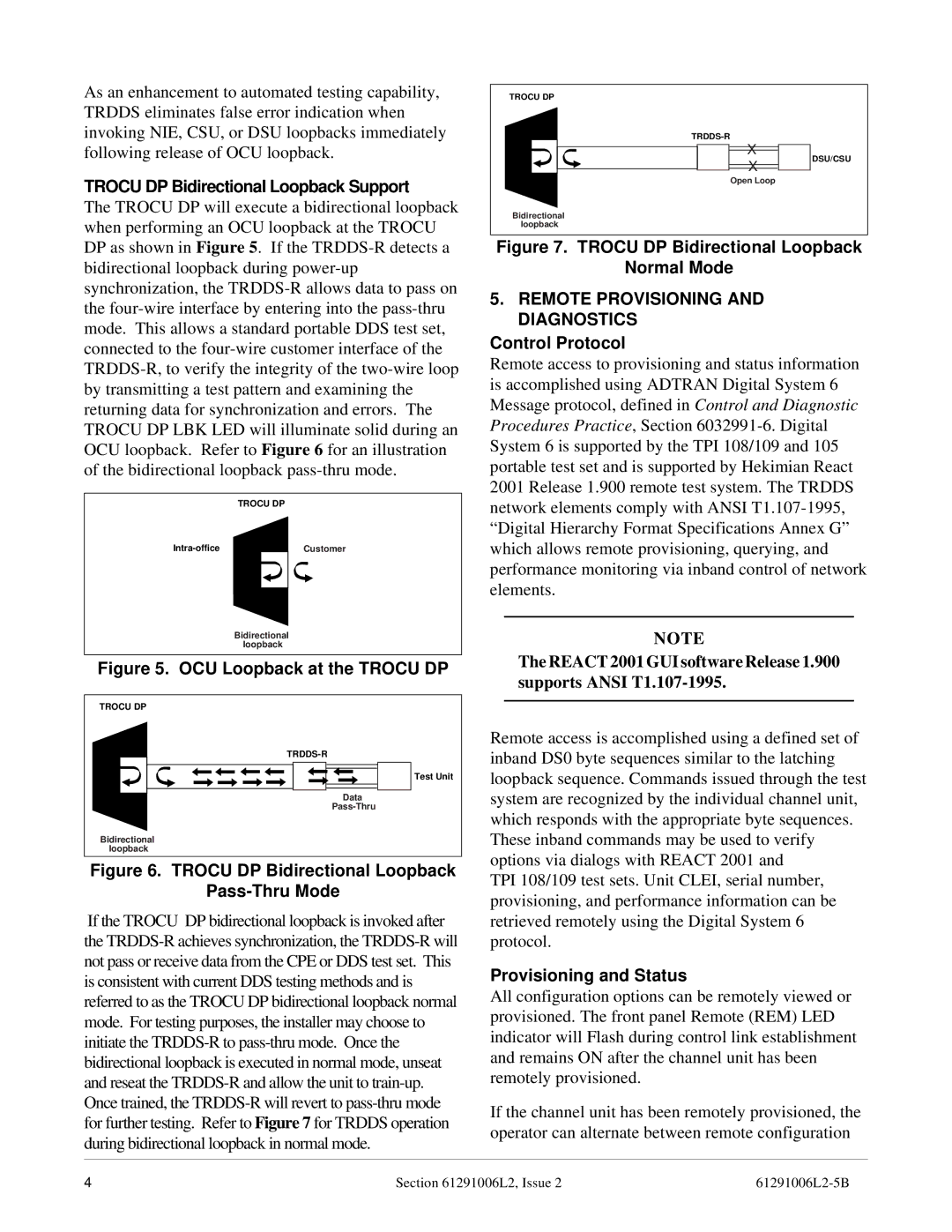
As an enhancement to automated testing capability, TRDDS eliminates false error indication when invoking NIE, CSU, or DSU loopbacks immediately following release of OCU loopback.
TROCU DP Bidirectional Loopback Support
The TROCU DP will execute a bidirectional loopback when performing an OCU loopback at the TROCU DP as shown in Figure 5. If the
TROCU DP
Bidirectional loopback
Figure 5. OCU Loopback at the TROCU DP
TROCU DP |
Test Unit |
Data |
Bidirectional |
loopback |
Figure 6. TROCU DP Bidirectional Loopback
Pass-Thru Mode
If the TROCU DP bidirectional loopback is invoked after the
TROCU DP |
| |
| ||
X | DSU/CSU | |
X | ||
| ||
Open Loop |
| |
Bidirectional |
| |
loopback |
|
Figure 7. TROCU DP Bidirectional Loopback
Normal Mode
5.REMOTE PROVISIONING AND DIAGNOSTICS
Control Protocol
Remote access to provisioning and status information is accomplished using ADTRAN Digital System 6 Message protocol, defined in Control and Diagnostic Procedures Practice, Section
NOTE
The REACT 2001 GUI software Release 1.900 supports ANSI
Remote access is accomplished using a defined set of inband DS0 byte sequences similar to the latching loopback sequence. Commands issued through the test system are recognized by the individual channel unit, which responds with the appropriate byte sequences. These inband commands may be used to verify options via dialogs with REACT 2001 and
TPI 108/109 test sets. Unit CLEI, serial number, provisioning, and performance information can be retrieved remotely using the Digital System 6 protocol.
Provisioning and Status
All configuration options can be remotely viewed or provisioned. The front panel Remote (REM) LED indicator will Flash during control link establishment and remains ON after the channel unit has been remotely provisioned.
If the channel unit has been remotely provisioned, the operator can alternate between remote configuration
4 | Section 61291006L2, Issue 2 |
